-
EXECUTIVE SUMMARY 16
-
MARKET ATTRACTIVENESS
-
ANALYSIS 17
-
GLOBAL METAL BONDING ADHESIVES MARKET, BY APPLICATION 17
-
TYPE 18
-
GLOBAL METAL BONDING ADHESIVES MARKET, BY RESIN
-
GLOBAL METAL BONDING ADHESIVES MARKET, BY REGION 19
-
MARKET INTRODUCTION 20
-
DEFINITION 20
-
SCOPE OF THE STUDY 20
-
RESEARCH OBJECTIVE 20
-
MARKET STRUCTURE 21
-
RESEARCH METHODOLOGY 22
-
DATA MINING 22
-
SECONDARY RESEARCH 23
-
PRIMARY RESEARCH 23
- PRIMARY INTERVIEWS AND INFORMATION GATHERING
-
PROCESS 24
-
BREAKDOWN OF PRIMARY RESPONDENTS 24
-
RESEARCH METHODOLOGY FOR MARKET SIZE ESTIMATION 26
- BOTTOM-UP APPROACH
- TOP-DOWN
-
APPROACH 27
-
PRICING, TRADE AND MARKET BREAKDOWN APPROACH 28
-
DATA VALIDATION 28
-
ASSUMPTIONS & LIMITATIONS 29
-
MARKET DYNAMICS 30
-
INTRODUCTION 30
-
DRIVERS 31
- INCREASING PREFERENCE
- AN INCREASE IN DEMAND FROM THE AUTOMOTIVE AND
- INCREASING GROWTH FROM AEROSPACE SECTORS 31
-
FOR HIGH-PERFORMANCE ADHESIVES IN VARIOUS APPLICATIONS 31
-
TRANSPORTATION SECTORS 31
-
RESTRAINT 33
- VOLATILITY IN RAW MATERIAL
-
PRICES 33
-
STRINGENT ENVIRONMENT REGULATIONS 33
-
-
OPPORTUNITIES 34
- INCREASING THE USE OF INDUSTRIAL ADHESIVES TO REPLACE MECHANICAL
-
FASTENERS 34
-
INCREASING TECHNOLOGICAL DEVELOPMENTS 34
-
CHALLENGES 34
- IMPACT OF COVID-19 PANDEMIC 34
-
MARKET FACTOR ANALYSIS 35
-
VALUE CHAIN ANALYSIS/SUPPLY
- METAL BONDING ADHESIVES MANUFACTURERS 36
- DISTRIBUTION & SALES CHANNEL 36
- END-USERS 36
-
CHAIN ANALYSIS 35
-
RAW MATERIALS & SUPPLIERS 35
-
PORTER’S FIVE
- BARGAINING POWER OF BUYERS 37
- THREAT OF NEW ENTRANTS 38
- THREAT OF SUBSTITUTES 38
- INTENSITY OF RIVALRY
-
FORCES MODEL 37
-
BARGAINING POWER OF SUPPLIERS 37
-
PRICING
-
OVERVIEW, BY REGION (USD/TON) * 38
-
SURFACE PRE-TREATMENT FOR ADHESIVE BONDING AND COATING*
-
IMPACT
- OVERVIEW 39
- IMPACT ON SUPPLY CHAIN
- IMPACT OF COVID-19 ON END
-
OF CORONAVIRUS OUTBREAK ON GLOBAL METAL BONDING ADHESIVES MARKET* 39
-
OF METAL BONDING ADGESIVES 39
-
USE INDUSTRY 39
-
GLOBAL METAL BONDING ADHESIVES MARKET, BY APPLICATION 40
-
INTRODUCTION 40
-
AUTOMOTIVE AND TRANSPORTATION 43
- AUTOMOTIVE AND TRANPORTATION:
-
MARKET ESTIMATES & FORECAST BY REGION/COUNTRY, 2019-2030 43
-
INDUSTRIAL EQUIPMENT 45
- INDUSTRIAL EQUIPMENT:
-
MARKET ESTIMATES & FORECAST BY REGION/COUNTRY, 2019-2030 45
-
APPLIANCES 47
- APPLIANCES: MARKET ESTIMATES
-
& FORECAST BY REGION/COUNTRY, 2019-2030 47
-
-
AEROSPACE 49
- AEROSPACE: MARKET ESTIMATES & FORECAST BY REGION/COUNTRY,
-
ELECTRONIC 50
-
ELECTRONIC: MARKET ESTIMATES & FORECAST BY REGION/COUNTRY, 2019-2030 50
-
MEDICAL 51
- MEDICAL: MARKET
-
ESTIMATES & FORECAST BY REGION/COUNTRY, 2019-2030 51
-
OTHERS 52
- OTHERS: MARKET ESTIMATES & FORECAST BY
-
REGION/COUNTRY, 2019-2030 52
-
GLOBAL METAL BONDING ADHESIVES MARKET, BY RESIN TYPE 54
-
INTRODUCTION 54
-
EPOXY 57
- EPOXY: MARKET ESTIMATES
-
& FORECAST BY REGION/COUNTRY, 2019-2030 57
-
ACRYLIC 58
- ACRYLIC: MARKET ESTIMATES & FORECAST BY
-
REGION/COUNTRY, 2019-2030 58
-
POLYURETHANES 59
- POLYURETHANES: MARKET ESTIMATES & FORECAST BY REGION/COUNTRY,
-
UV CURES 60
-
UV CURES: MARKET ESTIMATES & FORECAST BY REGION/COUNTRY, 2019-2030 60
-
OTHERS 61
- OTHERS: MARKET
-
ESTIMATES & FORECAST BY REGION/COUNTRY, 2019-2030 61
-
GLOBAL METAL BONDING ADHESIVES MARKET, BY REGION
-
INTRODUCTION
-
NORTH
-
AMERICA 65
-
US 69
-
CANADA 72
-
EUROPE 75
-
GERMANY 79
-
UK 82
-
FRANCE 85
-
RUSSIA 88
-
ITALY 91
-
SPAIN 94
-
REST OF EUROPE 97
-
-
ASIA PACIFIC 100
- CHINA 104
- JAPAN 107
- INDIA 110
- SOUTH KOREA 113
- AUSTRALIA AND NEW
-
ZEALAND 116
-
REST OF ASIA PACIFIC 119
-
LATIN AMERICA 122
- MEXICO 126
- BRAZIL 129
- ARGENTINA 132
- REST OF LATIN AMERICA 135
-
MIDDLE EAST & AFRICA
- GCC
-
COUNTRIES 142
-
SOUTH AFRICA 145
-
REST OF THE MIDDLE EAST AND AFRICA 148
-
COMPETITIVE LANDSCAPE 151
-
COMPETITIVE OVERVIEW 151
-
COMPETITIVE BENCHMARKING 152
-
KEY DEVELOPMENTS & GROWTH
- MERGER & ACQUISITION 153
- JOINT VENTURES 154
-
STRATEGIES 153
-
NEW PRODUCT LAUNCH/SERVICE DEPLOYMENT 153
-
COMPANY PROFILES 155
-
EVONIK INDUSTRIES
- COMPANY OVERVIEW 171
- FINANCIAL OVERVIEW 171
- PRODUCTS OFFERED 172
- KEY DEVELOPMENTS 172
- SWOT ANALYSIS 173
- KEY STRATEGY 173
-
AG 155
-
COMPANY OVERVIEW 155
-
FINANCIAL OVERVIEW 156
-
PRODUCTS OFFERED 156
-
KEY DEVELOPMENTS 157
-
SWOT ANALYSIS 158
-
KEY STRATEGY 158
-
BASF SE 159
-
COMPANY OVERVIEW 159
-
FINANCIAL OVERVIEW 159
-
PRODUCTS OFFERED 160
-
KEY DEVELOPMENTS 160
-
SWOT ANALYSIS 161
-
KEY STRATEGY 161
-
SIKA AG 162
-
COMPANY OVERVIEW 162
-
FINANCIAL OVERVIEW 162
-
PRODUCTS OFFERED 163
-
KEY DEVELOPMENTS 163
-
SWOT ANALYSIS 164
-
KEY STRATEGY 164
-
HENKEL AG 165
-
COMPANY OVERVIEW 165
-
FINANCIAL OVERVIEW 165
-
PRODUCTS OFFERED 166
-
KEY DEVELOPMENTS 166
-
SWOT ANALYSIS 167
-
KEY STRATEGY 167
-
DOW 168
-
COMPANY OVERVIEW 168
-
FINANCIAL OVERVIEW 168
-
PRODUCTS OFFERED 169
-
KEY DEVELOPMENTS 169
-
SWOT ANALYSIS 170
-
KEY STRATEGY 170
-
H.B. FULLER COMPANY 171
-
3M 174
- COMPANY OVERVIEW 174
- FINANCIAL OVERVIEW 174
- PRODUCTS OFFERED 175
- KEY DEVELOPMENTS 175
- SWOT ANALYSIS 176
- KEY STRATEGY 176
-
ASHLAND 177
- COMPANY OVERVIEW 177
- FINANCIAL OVERVIEW 177
- PRODUCTS OFFERED 178
- KEY DEVELOPMENTS 178
- SWOT ANALYSIS 179
- KEY STRATEGY 179
-
ARKEMA 180
- COMPANY OVERVIEW 180
- FINANCIAL OVERVIEW 180
- PRODUCTS OFFERED 181
- KEY DEVELOPMENTS 181
- SWOT ANALYSIS 182
- KEY STRATEGY 182
-
HUNTSMAN INTERNATIONAL LLC 183
- COMPANY OVERVIEW 183
- FINANCIAL OVERVIEW
-
PRODUCTS OFFERED 184
-
KEY DEVELOPMENTS 185
-
SWOT ANALYSIS 185
-
KEY STRATEGY 186
-
APPENDIX 187
-
REFERENCES 187
-
RELATED REPORTS 187
-
-
LIST OF TABLES
-
MARKET SYNOPSIS
-
TABLE 2
-
LIST OF ASSUMPTIONS 29
-
TABLE
-
GLOBAL METAL BONDING ADHESIVES MARKET, BY APPLICATION, 2019–2030 (USD MILLION)
-
TABLE 4
-
GLOBAL METAL BONDING ADHESIVES MARKET, BY APPLICATION, 2019–2030 (KILO TONS)
-
TABLE 5
-
AUTOMOTIVE AND TRANSPORTATION MARKET ESTIMATES & FORECAST, BY REGION, 2019-2030
-
(USD MILLION) 43
-
TABLE
-
AUTOMOTIVE AND TRANSPORTATION MARKET ESTIMATES & FORECAST, BY REGION, 2019-2030
-
(KILO TONS) 44
-
TABLE
-
INDUSTRIAL EQUIPMENT MARKET ESTIMATES & FORECAST, BY REGION, 2019-2030 (USD
-
MILLION) 45
-
TABLE
-
INDUSTRIAL EQUIPMENT MARKET ESTIMATES & FORECAST, BY REGION, 2019-2030 (KILO
-
TONS) 46
-
TABLE
-
APPLIANCES MARKET ESTIMATES & FORECAST, BY REGION, 2019-2030 (USD MILLION)
-
TABLE 10
-
APPLIANCES MARKET ESTIMATES & FORECAST, BY REGION, 2019-2030 (KILO TONS) 48
-
AEROSPACE MARKET
-
ESTIMATES & FORECAST, BY REGION, 2019-2030 (USD MILLION) 49
-
AEROSPACE MARKET ESTIMATES
-
& FORECAST, BY REGION, 2019-2030 (KILO TONS) 49
-
ELECTRONIC MARKET ESTIMATES & FORECAST,
-
BY REGION, 2019-2030 (USD MILLION) 50
-
ELECTRONIC MARKET ESTIMATES & FORECAST, BY
-
REGION, 2019-2030 (KILO TONS) 50
-
MEDICAL MARKET ESTIMATES & FORECAST, BY REGION, 2019-2030
-
(USD MILLION) 51
-
TABLE
-
MEDICAL MARKET ESTIMATES & FORECAST, BY REGION, 2019-2030 (KILO TONS) 52
-
OTHERS MARKET
-
ESTIMATES & FORECAST, BY REGION, 2019-2030 (USD MILLION) 52
-
OTHERS MARKET ESTIMATES
-
& FORECAST, BY REGION, 2019-2030 (KILO TONS) 53
-
GLOBAL METAL BONDING ADHESIVES MARKET, BY
-
RESIN TYPE, 2019–2030 (USD MILLION) 55
-
GLOBAL METAL BONDING ADHESIVES MARKET, BY
-
APPLICATION, 2019–2030 (KILO TONS) 56
-
EPOXY MARKET ESTIMATES & FORECAST, BY
-
REGION, 2019-2030 (USD MILLION) 57
-
EPOXY MARKET ESTIMATES & FORECAST, BY REGION,
-
ACRYLIC MARKET ESTIMATES & FORECAST, BY REGION, 2019-2030
-
(USD MILLION) 58
-
TABLE
-
ACRYLIC MARKET ESTIMATES & FORECAST, BY REGION, 2019-2030 (KILO TONS) 58
-
POLYURETHANES
-
MARKET ESTIMATES & FORECAST, BY REGION, 2019-2030 (USD MILLION) 59
-
POLYURETHANES
-
MARKET ESTIMATES & FORECAST, BY REGION, 2019-2030 (KILO TONS) 59
-
UV CURES MARKET ESTIMATES
-
& FORECAST, BY REGION, 2019-2030 (USD MILLION) 60
-
UV CURES MARKET ESTIMATES & FORECAST,
-
BY REGION, 2019-2030 (KILO TONS) 60
-
OTHERS MARKET ESTIMATES & FORECAST, BY REGION,
-
OTHERS MARKET ESTIMATES & FORECAST, BY REGION, 2019-2030
-
(KILO TONS) 61
-
TABLE
-
GLOBAL METAL BONDING ADHESIVES MARKET, BY REGION, 2019–2030 (USD MILLION)
-
TABLE 32
-
GLOBAL METAL BONDING ADHESIVES MARKET, BY REGION, 2019–2030 (KILO TONS) 64
-
NORTH AMERICA:
-
METAL BONDNG ADHESIVES MARKET, BY COUNTRY, 2019 TO 2030 (USD MILLION) 65
-
NORTH AMERICA:
-
METAL BONDNG ADHESIVES MARKET, BY COUNTRY, 2019 TO 2030 (KILO TONS) 66
-
NORTH AMERICA:
-
METAL BONDNG ADHESIVES MARKET, BY APPLICATION, 2019 TO 2030 (USD MILLION) 66
-
NORTH AMERICA:
-
METAL BONDNG ADHESIVES MARKET, BY APPLICATION, 2019 TO 2030 (KILO TONS) 67
-
NORTH AMERICA:
-
METAL BONDNG ADHESIVES MARKET, BY RESIN TYPE, 2019 TO 2030 (USD MILLION) 67
-
NORTH AMERICA:
-
METAL BONDNG ADHESIVES MARKET, BY RESIN TYPE, 2019 TO 2030 (KILO TONS) 68
-
US: METAL BONDNG
-
ADHESIVES MARKET, BY APPLICATION, 2019 TO 2030 (USD MILLION) 69
-
US: METAL BONDNG ADHESIVES
-
MARKET, BY APPLICATION, 2019 TO 2030 (KILO TONS) 70
-
US: METAL BONDNG ADHESIVES MARKET, BY RESIN
-
TYPE, 2019 TO 2030 (USD MILLION) 70
-
US: METAL BONDNG ADHESIVES MARKET, BY RESIN TYPE,
-
CANADA: METAL BONDNG ADHESIVES MARKET, BY APPLICATION, 2019
-
TO 2030 (USD MILLION) 72
-
CANADA: METAL BONDNG ADHESIVES MARKET, BY APPLICATION, 2019
-
TO 2030 (KILO TONS) 73
-
TABLE
-
CANADA: METAL BONDNG ADHESIVES MARKET, BY RESIN TYPE, 2019 TO 2030 (USD MILLION)
-
TABLE 46
-
CANADA: METAL BONDNG ADHESIVES MARKET, BY RESIN TYPE, 2019 TO 2030 (KILO TONS) 74
-
EUROPE: METAL
-
BONDNG ADHESIVES MARKET, BY COUNTRY, 2019 TO 2030 (USD MILLION) 76
-
EUROPE: METAL BONDNG
-
ADHESIVES MARKET, BY COUNTRY, 2019 TO 2030 (KILO TONS) 76
-
EUROPE: METAL BONDNG ADHESIVES MARKET, BY
-
APPLICATION, 2019 TO 2030 (USD MILLION) 77
-
EUROPE: METAL BONDNG ADHESIVES MARKET, BY
-
APPLICATION, 2019 TO 2030 (KILO TONS) 77
-
EUROPE: METAL BONDNG ADHESIVES MARKET, BY RESIN
-
TYPE, 2019 TO 2030 (USD MILLION) 78
-
EUROPE: METAL BONDNG ADHESIVES MARKET, BY RESIN
-
TYPE, 2019 TO 2030 (KILO TONS) 78
-
GERMANY: METAL BONDNG ADHESIVES MARKET, BY APPLICATION, 2019
-
TO 2030 (USD MILLION) 79
-
GERMANY: METAL BONDNG ADHESIVES MARKET, BY APPLICATION, 2019
-
TO 2030 (KILO TONS) 80
-
TABLE
-
GERMANY: METAL BONDNG ADHESIVES MARKET, BY RESIN TYPE, 2019 TO 2030 (USD MILLION)
-
TABLE 56
-
GERMANY: METAL BONDNG ADHESIVES MARKET, BY RESIN TYPE, 2019 TO 2030 (KILO TONS)
-
TABLE 57
-
UK: METAL BONDNG ADHESIVES MARKET, BY APPLICATION, 2019 TO 2030 (USD MILLION) 82
-
UK: METAL BONDNG
-
ADHESIVES MARKET, BY APPLICATION, 2019 TO 2030 (KILO TONS) 83
-
UK: METAL BONDNG ADHESIVES
-
MARKET, BY RESIN TYPE, 2019 TO 2030 (USD MILLION) 83
-
UK: METAL BONDNG ADHESIVES MARKET, BY RESIN
-
TYPE, 2019 TO 2030 (KILO TONS) 84
-
FRANCE: METAL BONDNG ADHESIVES MARKET, BY APPLICATION, 2019
-
TO 2030 (USD MILLION) 85
-
FRANCE: METAL BONDNG ADHESIVES MARKET, BY APPLICATION, 2019
-
TO 2030 (KILO TONS) 86
-
TABLE
-
FRANCE: METAL BONDNG ADHESIVES MARKET, BY RESIN TYPE, 2019 TO 2030 (USD MILLION)
-
TABLE 64
-
FRANCE: METAL BONDNG ADHESIVES MARKET, BY RESIN TYPE, 2019 TO 2030 (KILO TONS) 87
-
RUSSIA: METAL
-
BONDNG ADHESIVES MARKET, BY APPLICATION, 2019 TO 2030 (USD MILLION) 88
-
RUSSIA: METAL
-
BONDNG ADHESIVES MARKET, BY APPLICATION, 2019 TO 2030 (KILO TONS) 89
-
RUSSIA: METAL BONDNG
-
ADHESIVES MARKET, BY RESIN TYPE, 2019 TO 2030 (USD MILLION) 89
-
RUSSIA: METAL BONDNG
-
ADHESIVES MARKET, BY RESIN TYPE, 2019 TO 2030 (KILO TONS) 90
-
ITALY: METAL BONDNG ADHESIVES MARKET, BY
-
APPLICATION, 2019 TO 2030 (USD MILLION) 91
-
ITALY: METAL BONDNG ADHESIVES MARKET, BY
-
APPLICATION, 2019 TO 2030 (KILO TONS) 92
-
ITALY: METAL BONDNG ADHESIVES MARKET, BY RESIN
-
TYPE, 2019 TO 2030 (USD MILLION) 92
-
ITALY: METAL BONDNG ADHESIVES MARKET, BY RESIN
-
TYPE, 2019 TO 2030 (KILO TONS) 93
-
SPAIN: METAL BONDNG ADHESIVES MARKET, BY APPLICATION, 2019
-
TO 2030 (USD MILLION) 94
-
SPAIN: METAL BONDNG ADHESIVES MARKET, BY APPLICATION, 2019
-
TO 2030 (KILO TONS) 95
-
TABLE
-
SPAIN: METAL BONDNG ADHESIVES MARKET, BY RESIN TYPE, 2019 TO 2030 (USD MILLION)
-
TABLE 76
-
SPAIN: METAL BONDNG ADHESIVES MARKET, BY RESIN TYPE, 2019 TO 2030 (KILO TONS) 96
-
REST OF EUROPE:
-
METAL BONDNG ADHESIVES MARKET, BY APPLICATION, 2019 TO 2030 (USD MILLION) 97
-
REST OF EUROPE:
-
METAL BONDNG ADHESIVES MARKET, BY APPLICATION, 2019 TO 2030 (KILO TONS) 98
-
REST OF

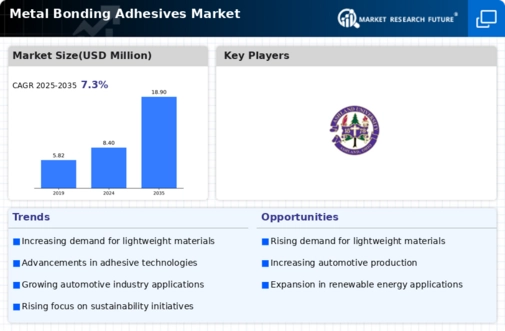

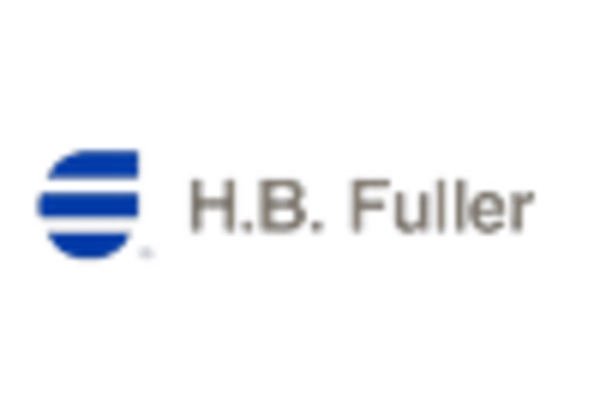
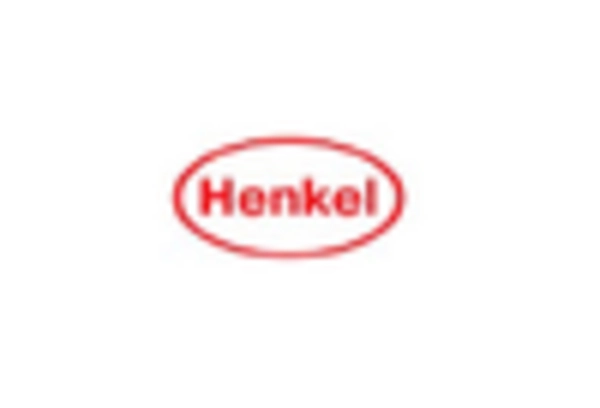
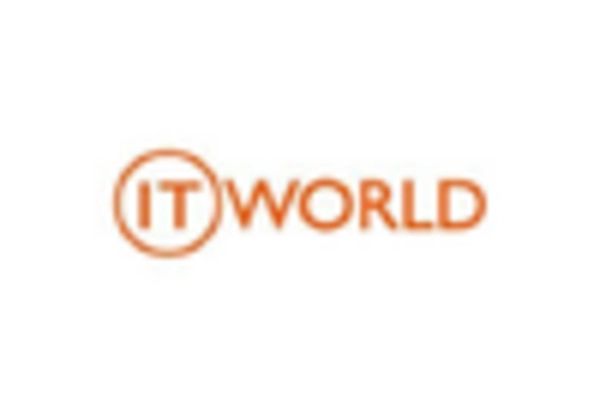
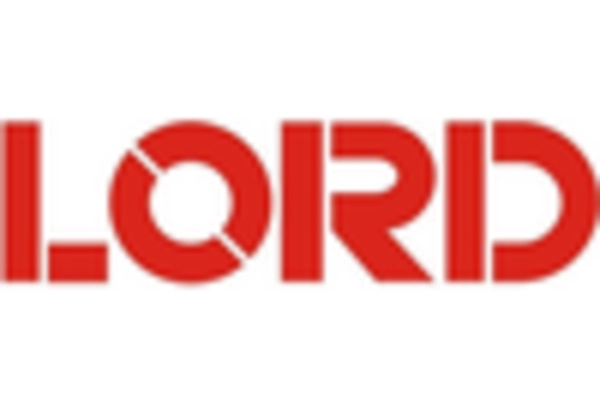










Leave a Comment